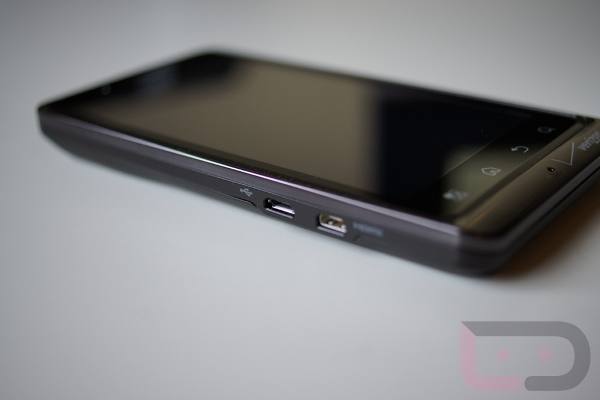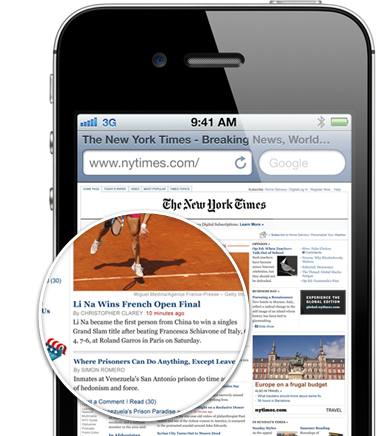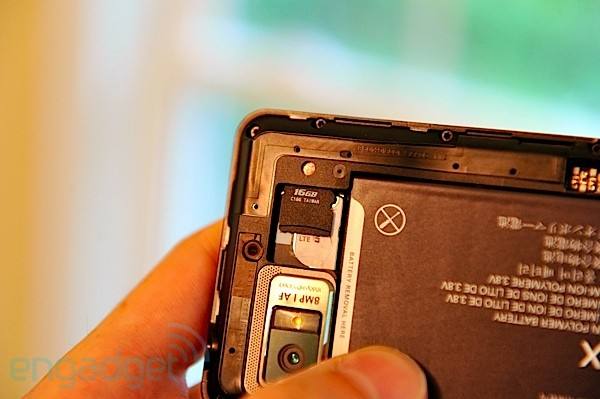Although Apple’s recently launched iPhone 4S disappointed quite a lot of people primarily because it’s just an “iPhone 4 with better specs,” the iPhone 4S remains a sturdy contender against currently existing high-end Android smartphones.
In this comparison review, Android Authority gives you a rundown of the iPhone 4S and the Motorola DROID Bionic, which Verizon unleashed just last month.
Which of the two smartphones has the upper hand? Read on to find out.
Physical Build and Design
iPhone 4S
- Physical dimensions: 114 mm x 58 mm x 9.3 mm
- Weight: 138 g
DROID Bionic
- Physical dimensions: 127 mm x 66 mm x 10.9mm
- Weight: 158 g
Suprisingly, Apple did not make any significant changes to the iPhone 4S. Just like the iPhone 4, the iPhone 4S will retain its glossy back and front cover, with an aluminum edging design. It also has the same dimensions as its predecessor.
Size-wise, the iPhone 4S is more pocketable, owing to its smaller size than the Motorola DROID Bionic’s. The overall size of the iPhone 4S also accounts for its lighter weight–a full 20 grams lighter than the Motorola DROID Bionic.
The DROID Bionic, on the other hand, has smooth curved corners, a design element it inherited from the Motorola Photon 4G. The screen is surrounded with a metal skeleton, while the body is encapsulated in a metal frame–giving the phone its rigid structure.
Yet, although the two phones differ in sizes, different people might have different impressions of which device is easier to grasp. Owing to its small size, the iPhone 4S looks like an easy pick for someone who wants an easy-to-hold device. The Motorola DROID Bionic, meanwhile, despite being bigger than the iPhone 4S, remains easy to hold in one’s hand.
The DROID Bionic also has a bigger and thicker structure than the iPhone 4S, which can be explained by its internal hardware–such as a bigger battery, LTE radios, and built-in slots for microSD cards and USB devices.
Thus, on the basis of form factor, size, and physical attributes, the iPhone 4S wins over the bigger and heavier DROID Bionic. As for the beauty aspect of the two phones external appearances, we leave the judgment to you, since perception of beauty, as always, lies in the eyes of the beholder.
Screen and Display
iPhone 4S
- Display size: 3.5 inches
- Display technology: IPS LCD
- Display resolution: 960×640
DROID Bionic
- Display size: 4.3 inches
- Display technology: Pentile-matrix TFT LCD
- Display resolution: 960×540
The DROID Bionic sports a wider 4.3-inch Pentile-matrix TFT LCD with a 960×540 resolution. The bigger screen size seems to be advantageous in enhancing Web browsing and provides a wider viewing space for images and videos.
In contrast, the iPhone 4S has a smaller screen size–a 3.5-inch IPS LCD display and gives you a crisper display with its 960×640 resolution screen. The iPhone 4S, in fact, has a higher pixel density than the DROID Bionic’s, owing to the Apple phone’s smaller screen and high resolution.
Most people would prefer a phone with a wider screen (e.g., the Motorola DROID Bionic), since it provides more space and is easier to handle especially by those who have big thumbs/fingers. But, if you would rather go for crisper images, the iPhone 4S with its high pixel density display will be ideal for you.
Phone Power
iPhone 4S
- Processor: dual-core Apple A5
- Clock Speed: 1.0 GHz
- Operating system: iOS 5
- RAM: 512 MB
- In-built storage: 16 GB / 32 GB / 64 GB
- External storage: none
- Battery: 1, 420mAh (non-removable)
- Battery talk time: 8 hours on 3G, 14 hours on 2G
DROID Bionic
- Processor: dual-core Texas Instruments OMAP 4430
- Clock speed: 1.0 GHz
- Operating system: Android 2.3.4 Gingerbread
- RAM: 1 GB
- In-built storage: 16 GB
- External storage: microSDHC expansion slot
- Battery: 1,735mAh (removable)
- Battery talk time: 10.8 hours on 3G
Processing and Storage
The Motorola DROID Bionic runs on Android 2.3.4 Gingerbread powered by an OMAP 4430 chipset clocked at 1.0 GHz. The iPhone 4S, on the other hand, runs iOS 5 on top of an Apple A5 chipset clocked at (most likely) 1.0 GHz. Both phones’ processors are dual-core ARM Cortex-A9 processors, which imply that they have comparable processing powers.
In terms of RAM, the DROID Bionic boasts of bigger RAM–1 gigabyte of volatile memory compared to the iPhone 4S’s 512 megabytes. The amount of RAM matters a lot in overall processing power.
For storage, the iPhone 4S has 16-GB, 32-GB, and 64-GB models. However, whatever model you get, you will forever be stuck to the storage capacity of that model, since the iPhone 4S has no way of adding more storage.
In contrast, the Motorola DROID Bionic only has a 16-gigabyte model. You actually get 16 GB of storage built in, and another 16 GB microSD card preinstalled–so, you’re practically getting a total of 32 GB of storage right out of the box. And, if you so choose, you can replace the microSD card with another one with bigger capacity (up to 32 GB).
The DROID Bionic also comes with the ZumoCast app preinstalled. ZumoCast practically allows the DROID Bionic to use more storage hosted on a remote computer without having to store files into the DROID Bionic itself.
Battery Power
Apple has successfully packed more power into the iPhone 4S’s 1,420-mAh battery that offers up to 8 hours of continuous talk time. This has been a great achievement from Apple since the iPhone 4S’s predecessor–the iPhone 4–has the same 9.3-mm thickness with a lesser battery capacity of 6 hours talk time.
In contrast, the thicker DROID Bionic carries a battery rated at 1,735 mAh. Motorola claims that the phone offers up to 10 hours of continuous talk time. It has also been reported to last up to 8 hours with LTE enabled.
The DROID Bionic may be thicker because of its bigger-capacity battery, but the extra thickness can be considered a trade-off for continuous talk time that is 2 hours longer than the iPhone 4S’s. Besides, while the iPhone 4S offers only 8 hours of talk time, that same amount of time can be used on the DROID Bionic with LTE enabled.
Data Network Speed
The Motorola DROID Bionic supports Verizon’s LTE network, which offers faster 4G data access compared to a 3G network. 4G LTE is reportedly capable of speeds up to 10 times faster than that offered by HSPA+ or WiMAX.
In terms of data network speed, the Motorola DROID Bionic seems to promise faster connectivity compared to the iPhone 4S’s 3G-only connectivity on HSPA+ networks.
Multimedia
iPhone 4S
- Primary camera: 8-megapixel
- Secondary camera: VGA
- Video recording: 1080p, 30 fps
- Flash support: None
DROID Bionic
- Primary camera: 8-megapixel
- Secondary camera: VGA
- Video recording: 1080p, 30 fps
- Flash support: Yes
As far as photo and video resolution is concerned, both the Motorola DROID Bionic and the iPhone 4S are capable of the same resolution quality.
Yet, the iPhone 4S seems to have the upper hand when it comes to snapping photos. Motorola is quite well-known in the telecommunications hardware department, but not so in the camera department.
The iPhone 4S’s camera reportedly focuses and shoots faster than the DROID Bionic’s. Apple also threw in an “image stabilization” solution into the iPhone 4S.
This isn’t saying, however, that the DROID Bionic’s camera produces horrible, awful photos. Far from the truth, the DROID Bionic is capable of good quality photos.
As far as photo quality is concerned, the iPhone 4S gets the upper hand. If your primary use of your smartphone is for picture-taking, then it’s a great smartphone to own. Yet, those who are content with good, quality photos would also find the DROID Bionic’s camera acceptable enough.
Where it sucks in photo quality, the Motorola DROID Bionic compensates for with Flash support. This means the DROID Bionic can play Flash animations and movies that many websites have been enriched with these days. The iPhone 4S, however, simply has no such capability. Flash is not natively supported in the iPhone 4S.
Pricing
iPhone 4S
- 16GB: US$199
- 32GB: US$299
- 64GB: US$399
DROID Bionic
- 16GB: US$299
The iPhone 4S is relatively cheaper than the DROID Bionic. With a 16-GB model, you can save as much as US$100 when you purchase an iPhone 4S. Can you use the excess US$100 to buy additional storage? Sadly, no. You’ll be stuck with 16 gigabytes for good.
Though the 16-GB model of the DROID Bionic costs US$100 more than the iPhone 4S’s 16-GB model, the DROID Bionic comes preinstalled with a 16-GB microSD card, which can be easily replaced with a 32-GB card. Buy as many expansion cards as you like. The DROID Bionic will take them all–one at a time, though. It might be a little inconvenient to swap between cards, but the ability to swap memory cards is in itself a convenience that the DROID Bionic provides–and which the iPhone 4S does not.
Final Thoughts
Despite its heavier build, the DROID Bionic offers more battery power, just enough for it to survive at work or outdoors before requiring a power charge. It also supports slots and ports for extended memory and connectivity–which Apple failed to add into its latest smartphone.
In contrast to the iPhone 4S’s screen size, the DROID Bionic has a wider screen which gives you enough space and viewing area. Display-wise, however, the iPhone 4S is a better choice for those who wish crisper and sharper display resolutions. Yet, owing to the bigger screen size, the DROID Bionic just might be a better pick for those who want a wider viewing area and wider screen for touch input.
Another big plus point for the DROID Bionic are its 4G LTE capabilities and built-in Flash support.
In terms of camera performance, the iPhone 4S offers a better experience. Some people do judge a smartphone by its camera and photo quality, but most folks can live with good and acceptable photo quality such as the DROID Bionic can provide.
The two smartphones offer similar features in several areas, and they also differ in others. Where they diverge, the differences between the two devices are wide enough to provide smartphone buyers choice. The final determining factor, of course, is each buyer’s subjective preference. The final decision still remains entirely up to you.
My personal pick is the DROID Bionic because of its power and performance, flexible storage, data connection speed, and bigger viewing area.












No comments:
Post a Comment